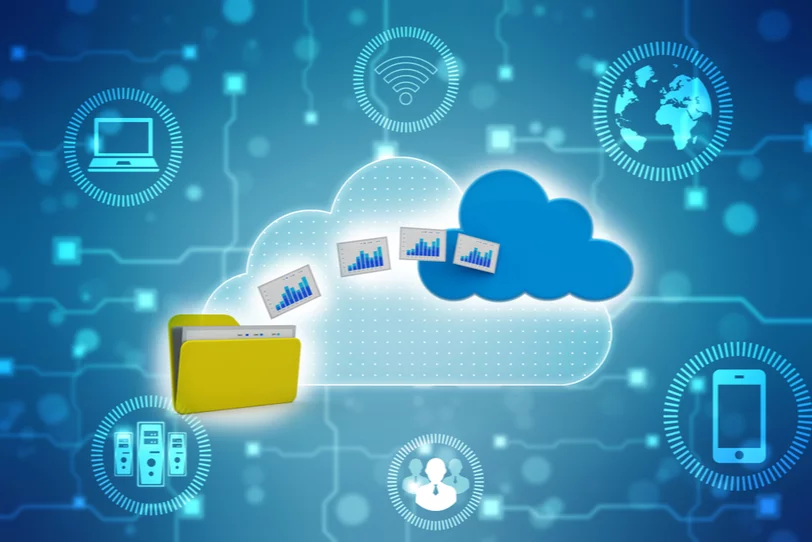
The costs of the public cloud are falling constantly. Thus, more and more organizations are moving their applications to the cloud. You can easily move your corporate email to a public SaaS service like Google mail or Office 365. There are many benefits of moving your applications to the cloud network. You will save a lot of money by using cloud technology.
Cloud is also a cost-effective and excellent option for disaster recovery. You will pay only for the data you are storing. It is also easy to scale up or down your server according to customer needs. Cloud providers will also let you copy data into their server for free. They will run regular Disaster recovery tests on their server. Cloud computing will also provide flexibility to your business. You can easily deploy new applications into the cloud. Enterprises don’t need to worry about buying new hardware or server.
Thus, most enterprises are moving their legacy systems to the cloud. It will allow them to become more flexible and reliable. However, it is difficult to move your legacy applications to the cloud. There are various complexities associated with the legacy application. You have to move years of data into your cloud. Your legacy systems also have unique hardware configurations. All your applications are deeply integrated. There are also various other dependencies like compliance standards and vendor agreements. Hence, you need to do proper planning before moving your legacy system to the cloud.
If you are migrating your legacy systems to the cloud without doing proper planning, then it can create many problems. In this article, we are going to talk about a few things that you can follow for a successful migration.
-
Set the project goals
First, you need to understand the impact of cloud migration on your enterprise capabilities, mission, and business. Your leadership team should talk about possible outcomes. They should establish a communication mechanism between them.
Your leadership team must create initial documentation of your legacy applications, systems, databases and services that you are moving to the cloud. They should also fix the deadline for this project. The information must be communicated between different staff members.
-
Break down your infrastructure
You should create a complete model of your application. Your model must include every piece of your application. Make sure to include important things like storage configurations, servers, network configuration, and how you will deploy this application. You should also create a network map. This map will help you in understanding how different components are communicating with each other.
If you have already broken down your infrastructure into individual parts, then you can easily develop a virtualized application environment. There are various tools like containers that you can use for creating your application environment. It has also become easy to implement these complex approaches.
-
Find your Cloud provider
Once your expectations are set, it is time to find the cloud provider for your company. There are three types of cloud models: public, private and hybrid. If you are not storing sensitive information, then the public cloud network is perfect for you. It is the most cost-effective cloud model. You can save a lot of your operational costs. But, your data will be stored in a public cloud server. If you are storing sensitive information like financial information, then the hybrid or private cloud model is perfect for you. In a private cloud network, only your applications will be running. Thus, you don’t need to worry about data security. But, it is difficult to maintain a private cloud. Thus, most companies are using hybrid clouds. In this, some of your applications will be running in a public cloud network. Your sensitive information will be stored separately in a private cloud. This ensures your data security.
You should find the cloud model which is perfect for your business. It is important to do proper research before selecting any cloud provider. This is also the best time to decrease your operational clouds. Try to select a cloud provider which is providing the most cost-effective option.
-
Initiate your Migration plan
It is time to develop your migration plan and initiate it. There is no one perfect plan for all companies. Your migration plan will depend on the legacy system you are using. You should follow the best practices for creating your migration plan. Make sure that your migration plan will meet your enterprise needs.
You should set a realistic deadline for your migration plan. There are various steps involved in a migration plan. First, you have to prepare all your legacy data and systems. After that, you have to perform the migration and test your applications. Once you have initiated the migration plan, it is important to communicate regularly with your leadership and end-users.
-
Integrate security into your applications
Most companies don’t think about application security while deploying them. It will slow down delivery processes like DevOps. It will also create some friction between your security team and the DevOps. You should consider security as an important part of your cloud environment. Thus, make sure to add various security elements while deploying your application. This will make sure that your enterprise can protect your legacy applications once they are deployed.
Conclusion
It is important to move your legacy systems to the cloud. You can save a lot of your money by moving your applications to the cloud. Organizations can easily scale up or down your resources. If you have a good partner, then it will become easy to move your applications to the cloud. They will help you in preparing both your application and organization. If you want to know more about cloud migration, then you can contact Bleuwire.
Contact us today to learn about Bleuwire™ services and solutions in how we can help your business.





